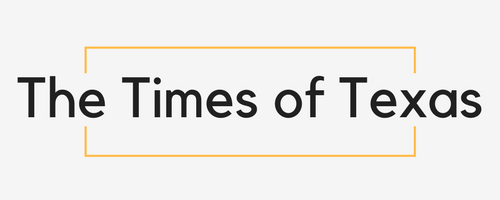Seeks economic justice for consumers and responsible lenders
DES PLAINES, IL, November 03, 2023 /24-7PressRelease/ — A 2021 Illinois law intended to protect consumers from predatory lending practices has proven to have deleterious financial effects on the very households it was designed to benefit.
A newly constituted industry group—Responsible Lending Illinois—seeks to advance economic justice for both consumers and responsible lenders.
“The Illinois legislature passed the Illinois Predatory Loan Prevention Act (PLPA) in 2021, seeking to protect consumers from predatory loan practices,” states Barbara J. Wolf, Responsible Lending Illinois President. “Predatory lending is a practice by which a lender makes a loan that the borrow does not need or cannot afford. It may involve deception or fraud, and predatory lenders often take unfair advantage of a borrower’s lack of understanding of the terms and conditions of the loan.
“Every responsible lender supports consumer protection from predatory lending,” she adds.
Rate cap results in a reduction of the availability of credit
In 2022, the PLPA imposed a 36 percent “all-in” annual interest rate cap on consumer loans made or offered by any person or entity—excluding banks and credit unions—to a consumer in Illinois.
“This rate cap, although well-intentioned, has actually served to decrease the availability of small-dollar credit in Illinois,” notes Barbara. “A recent study found that the 36 percent cap has worsened the self-reported financial well-being of many Illinois customers.”
The study, conducted by J. Brandon Bolen, Mississippi College; Gregory Elliehausen, Board of Governors, Federal Reserve System; and Thomas W. Miller, Mississippi State University, examined the effects of the rate cap and found:
• All lender types (including those exempt lenders under the PLPA) originated significantly fewer unsecured installment loans to subprime borrows in the six months after the imposition of the rate cap than in the six months prior to the rate cap’s imposition. The rate cap decreased the volume of loans in Illinois by eight percent relative to the number of loans in the six months before the imposition of the cap.
• The average loan size (in dollars) increased across all borrower risk categories after the imposition of the rate cap. This finding is consistent with the notion that a larger loan size is needed to make “small loans” profitable for lenders at the 36 percent annual interest rate cap.
• In the six months following the imposition of the rate cap, the number of loans to prime borrowers increased by 20 percent, while the average loan size increased by seven percent, indicating borrowers with better credit histories experienced less of a reduction in access to credit than borrowers with poor credit histories.
Fewer lending options for consumers
“Almost four in ten survey respondents—39 percent—reported that their financial well-being had declined since their previous lender stopped offering loans in Illinois,” Barbara reports. “What’s more, nearly 60 percent of respondents reported that they’d been unable to borrow necessary funds since March 2021.
“As a result of the 36 percent rate cap,” she continues, “many lenders decided to exit Illinois, leaving a significant void in lending options just when consumers faced pressing financial demands and unforeseen expenses.
“The few lenders who chose to stay and serve Illinois consumers,” Barbara adds, “are navigating escalating costs against little to no profitability.”
Instead of helping consumers, the 36 percent “all-in” rate cap has resulted in more stringent lending criteria and fewer lenders willing to write small-dollar loans.
Illinois consumers now face new exploitation
In addition to reduced access to legal small-dollar loans, unwitting consumers are now exposed to new dangers.
“Former lenders and lead providers are now selling leads to tribal lenders and other unregulated lenders,” notes Barbara. “This creates opportunities for these exploiters to advertise predatory products to consumers who may not understand with whom they’re dealing.”
The Responsible Lending Illinois solution
“At Responsible Lending Illinois,” Barbara states, “we want to maintain consumer protections while increasing the availability of small-dollar loans.”
Responsible Lending Illinois’s goals include:
1. Stopping unlicensed lenders from offering predatory products in Illinois:
• Preventing the selling of consumer loan inquiries to both tribal and illegal lenders
• Stopping lenders whose typical annual percentage rates are in excess of 700 percent from preying on Illinois consumers
2. Allowing an acquisition fee for licensed lenders in Illinois:
• Ten percent of the loan amount
• Distributed evenly across the entire loan term
• A minimum loan term of 12 months
“These two objectives serve the Illinois consumer,” Barbara states. “They allow small-loan lenders in Illinois to sustain these loans and continue to serve the customer, who often lives paycheck to paycheck and needs an affordable option when the unexpected arises.
“We seek economic justice for consumers and responsible lenders,” she concludes. “We want to help Illinois legislators see that eliminating the 36 percent rate cap will actually benefit the consumers it was originally intended to protect.”
About Responsible Lending Illinois
Responsible Lending Illinois is an advocacy group that seeks to educate policymakers and others on initiatives that will increase access to opportunity and close the racial wealth gap, and accessibility to loans, while ensuring the stability of the small-loan lenders in Illinois. Our research regarding financial issues will support our advocacy for change for both consumers and responsible lenders.
—
For the original version of this press release, please visit 24-7PressRelease.com here

